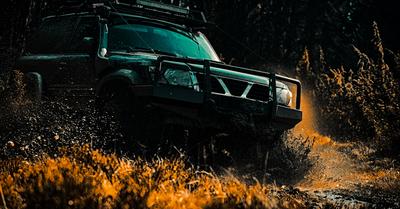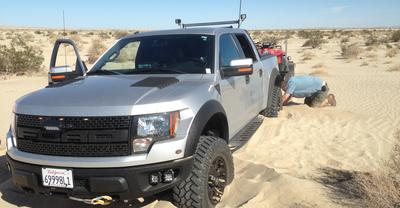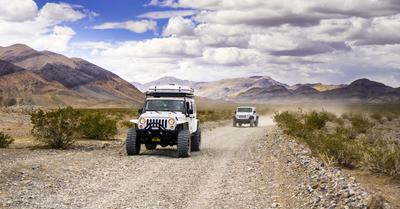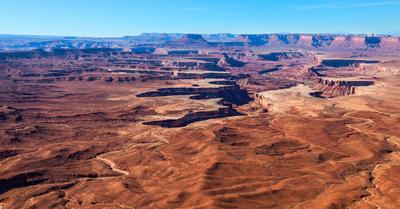Competitive off-road racing is a tricky field to break into without any experience. This is especially true when trying to start an off-road race team.
To start an off-road race team, follow these steps.
- Get Involved
- Find A Mentor
- Join An Existing Team First
- Choose Your Team Name
- Find Race Team Members
- Find Sponsors
- Prepare Your Race Vehicles
- Formulate A Team Strategy
- Market Your Brand
- Join Races & Compete
One of the great things about off-road racing is everybody has a chance. The industry has opportunities, so any beginner can find their skillset, quickly grow their network, and start a team using the steps in this guide.
Key Takeaways
- To start an off-road race team, Get Involved, Find A Mentor, Join An Existing Team First, Choose Your Team Name, Find Race Team Members, Find Sponsors, Prepare Your Race Vehicle, Formulate A Team Strategy, Market Your Brand, and finally Join Races & Compete.
- Some of the most popular and difficult off-road races include the Dakar Rally, Baja 1000, and Mint 400.
- Off-road racing is legal and allowed for registered vehicles. Off-road racing events need permits and sanctions from local authorities. Otherwise, they could be illegal events.
This article may contain affiliate links where we earn a commission from qualifying purchases.
How To Start An Off-Road Race Team
From picking a trendy team name to recruiting up-and-coming racers, starting an off-road racing team can be a fruitful experience. But it’s not something we can jump right into without any experience.
Instead, we prefer a slower approach by getting into the industry, meeting people, learning from professionals, and improving our driving skills. Don’t expect success overnight if you just started racing too.
The racing industry will time, but we know these ten steps will help anybody go from a beginner to an expert with a team competing in races.
1. Get Involved
Getting involved with off-road racing can be done despite the high level of skill required. It can also be quite competitive, but we recommend any looking to start a team do the following.
First, attend events in the area. This is the best way to meet other racers with more experience. Most racers are friendly and happy to answer any questions too.
Take this step seriously because it can set us up well for the future. Treat it like a passion and a full-time job by doing lots of research to find potential connections.
We recommend taking some of the Best In The Desert off-road racing classes to learn more about racing. It also shows what racers should expect at races.
2. Find A Mentor
Finding a mentor is invaluable in any industry, including off-road racing. This will help you connect with the right people, meet other racers, and find openings on existing racing teams.
Simple outreach to successful people in the industry can be rewarding. When we don’t have a network, finding a mentor seems impossible. But pushing past the fear of rejection is critical.
Many racers are dedicated and passionate, meaning they are happy to help new people and share some helpful advice. Once we find a mentor, it’s much easier to get more experience and continue on our path to starting our team.
3. Join An Existing Team First
Next, we recommend joining an existing team before trying to start one. We need experience before jumping right into it, and this is the best way to do it while minimizing our risk and costs.
It’s also a great way to get exposure. Winning races on a team will earn us money, get us recognized, and help us become a more prominent name in the industry.
To find teams, attend competitions as guests or register individually for races and perform well. Both allow us to get close to the bigger teams, interact with them, and see if they bring on new members.
4. Choose Your Team Name
After spending time on a racing team, we can risk starting our own. And the first order of business as the head of our new team is to choose a catchy name.
A good team name is unique but easy to understand too. The idea is to choose something short and memorable. Here are some perfect name examples.
- Drift Kings
- Fueled Up
- Burnt Rubber
- Run The World
- Aces Wild
There is no right answer when picking a team name. Big brands like Honda and Toyota have racing teams. If we can land a big sponsorship deal, this could be our team name too.
5. Find Race Team Members
Once we have our team name, it’s time to search for team members. We can try a few strategies to do this, but the most reliable one is to leverage the network we have been building by attending events, working out our mentor, and racing on a team.
We should be able to find new race team members doing this. If not, we can use the internet and social media to recruit members. There are Facebook groups and Instagram pages related to this niche.
The key to off-road racing is always to be friendly. Building a valuable network is a key skill, and it will come in handy for us while trying to bring on new team members now and in the future when the team grows.
6. Find Sponsors
Finding sponsors is not always an option for new teams. It will depend on our past experiences, network, and ranking among other off-road racers. Some brands will avoid sponsoring brand-new teams.
But it’s best to try finding sponsors to ensure the team is well-funded throughout the season. Search out potential backers who may benefit from associating their brands with ours as much as possible.
We can approach them with professionalism and enthusiasm to get them on board with supporting our mission and plans. Consider what they can offer in terms of assistance or reward if they choose to partner up with us.
Many sponsors will want the team named after their brand too. This is something to remember, so don’t get attached to any team name before sponsorships are in place.
7. Prepare Your Race Vehicles
Next, we can focus on our racing vehicles. Depending on our previous experience, we will likely remain in the same racing class. So if we are experienced with UTVs, it makes sense to keep racing and build a UTV racing team.
Making sure all required safety features are up-to-date is mandatory when prepping for a race. Doing an overhaul on any vehicles going out on track before each event is essential for ensuring top performance.
Putting together experienced technicians and pit crews are needed too. The crew will create maintenance standards that closely inspect every part related directly or indirectly to each car’s performance.
Every team needs at least one mechanic with a deep understanding of off-road vehicles. The pit crew will monitor race car performance and keep drivers safe.
Make sure all necessary certifications have been obtained before sending anyone out onto the course too. The rules will vary based on the race, but getting all proper vehicle registration done in advance is highly recommended.
8. Formulate A Team Strategy
After understanding our team, budget, and vehicles, we can think about a team strategy. Much like preparing cars adequately, researching racetracks, events, and what we hope to accomplish can set us up for success.
Having a good strategy helps ensure victory is achieved, so sit down with people involved behind the scenes and create a strategic plan. We can also do this before each race so the entire team understands our strategy for every event.
Our strategy plans should also be about picking our racing class. We can base this on the type of vehicle we are racing, our experience level, and our past successes.
Another factor that impacts our strategy is our finances. Our financial burn rate will affect how much we can practice, what we can spend on vehicles, what we can afford to pay in race registration fees, etc.
Lastly, consider implementing goals based on a points system to let members know concrete objectives. This encourages collaboration instead of fostering rivalry aimed toward achieving the same goal.
9. Market Your Brand
Once comfortable with our identity, we can market the team as a brand. This helps us gain exposure and enter more races and events. It can also lead to sponsorship deals.
It's essential not just to get the name out there but to allow potential sponsors to recognize why we are worth investing money & time into. This can lead to a growing brand.
Today, it’s easier than ever to market a racing team without a big budget. For free, this can be done on big social media platforms like Twitter, Tik Tok, Instagram, and Facebook.
10. Join Races & Compete
Finally, we can start joining local races and competing. Following these steps ensures everything is sorted out when setting up our team.
Many races around the country are open for registration. All we need to join is our team, some funding, and equipment.
One example is the Texas Desert Racing Association. They host UTV, car, and truck races in the deserts. For new teams, they are relatively inexpensive to join.
There may be other things specific to your needs that we should have covered here, but our suggestion is to start small, identify needs, test and refine our plan, slowly grow a bigger team, and be patient.
Types Of Off-Road Racing
There are two types of off-road racing: desert racing and short-course racing. We will explain each in detail, how they differ, and the better option for a new racing team.
Desert Racing
Desert racing is exactly what it sounds like, and it’s done by two and four-wheeled vehicles. It’s common to see ATVs, UTVs, trucks, motorcycles, cars, and dirt bikes all used in desert racing competitions.
The two most popular desert racing events are the Mint 400 and Baja 1000. New teams will have a tougher time getting and placing in these events because some of the best racers in the world compete there.
Short Course Racing
Short-course offroad racing is more professional and happens on a modified dirt road. This race course is usually designed and built with lots of corners.
This course is also much shorter than outdoor desert racing courses. One example of this course style is the Crandon International Off-Road Raceway.
Many new race teams will want to compete in desert races It’s an easier style of racing to get into right away.
What Are The Most Difficult Off-Road Races?
New off-road racing teams will typically stick to local events because funding and experience are limited. This means they would either avoid or not qualify for some of the most popular and difficult events.
Below we have listed the ten most challenging off-road races. These are reasonable goals for a new racing team, but local events are the best way to gain traction and improve the team’s skills first.
- Dakar Rally
- Baja 1000
- Mint 400
- King of the Hammers
- Gumball 3000
- WRC Safari Rally
- Mongol Rally
- 1000 Miglia
- Rally North America
- Las Vegas To Reno Race









